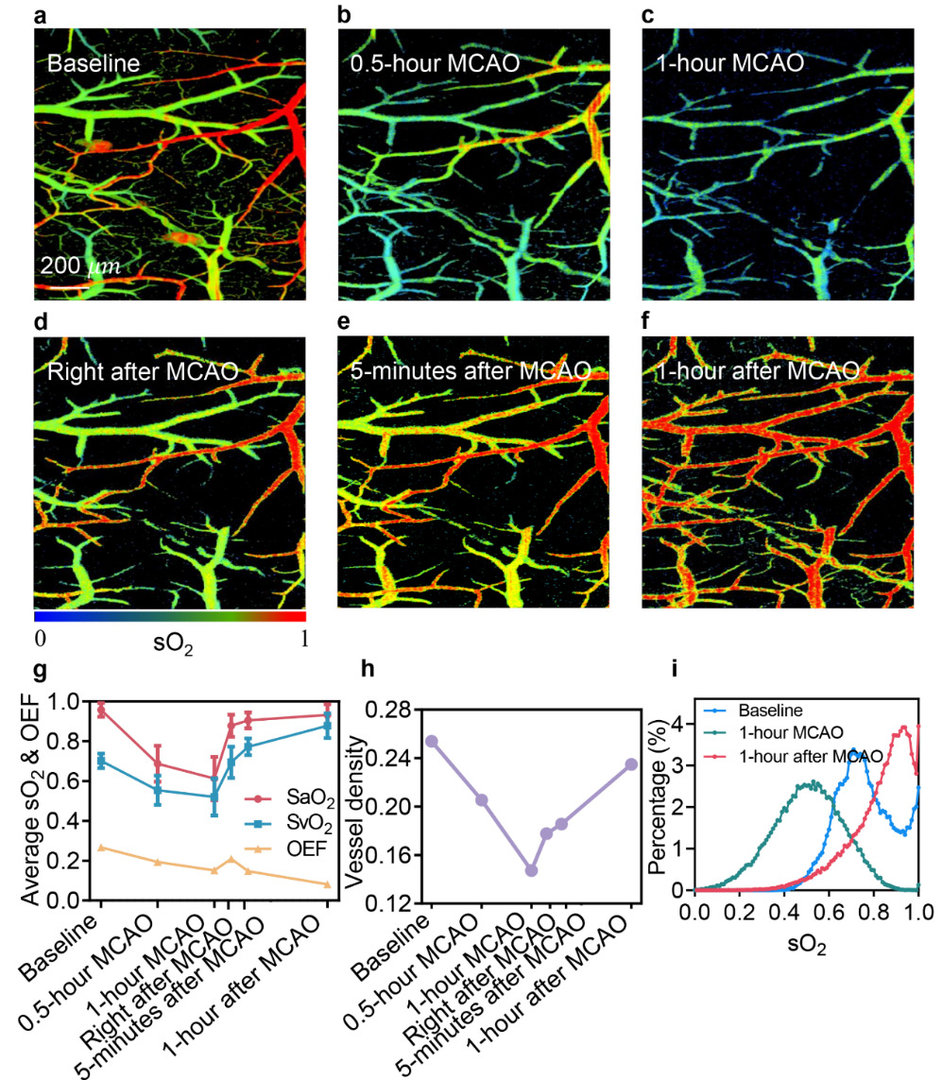
Opportunity
The invention addresses a crucial problem in medical diagnostics: accurately measuring blood oxygen saturation (sO?) in tissues. Existing methods often fall short; for example, pulse oximetry provides neither two-dimensional nor three-dimensional images of blood oxygen levels. Near-infrared spectroscopy and diffuse optical tomography can map sO, in three dimensions but offer poor spatial resolution. The sensitivity of functional magnetic resonance imaging and positron emission tomography (PET) in measuring tissue oxygenation is limited and their resolutions are insufficient to resolve images of tiny microvasculature. The failure to capture deeper tissue dynamics leads to inaccuracies caused by light scattering and fluence loss, which hamper the monitoring of critical conditions such as ischemia, stroke, thrombosis, and cancer. There is a need for a method of precisely quantifying blood oxygen saturation even in deeper tissues.
Technology
The novel technology utilizes a technique called photoacoustic microscopy to create detailed images of blood oxygen levels in living tissues. Essentially, it combines laser light and sound waves: a pulse of laser light is directed into the tissue, which causes a slight expansion and generates sound waves. By using two wavelengths of light, the system can measure the amount of oxyhemoglobin (oxygen-rich blood) and deoxyhemoglobin (oxygen-poor blood) present. Additionally, a reference wavelength helps account for any loss of light as it travels through the tissue, improving the accuracy of the results. This method allows for the creation of real-time, three-dimensional images that can be critical for monitoring health conditions, such as tracking blood oxygen levels during surgeries or assessing blood flow in brain activity.
Advantages
- The technology allows for non-invasive and non-label blood oxygen saturation measurements without the need for invasive procedures, enhancing patient comfort and safety.
- The technology provides high-resolution images of blood oxygen levels, enabling detailed observations of microvasculature that current imaging methods often miss.
- Unlike traditional pulse oximetry, which offers only two-dimensional readings, this method can create comprehensive three-dimensional images, giving a clearer understanding of blood distribution in tissues.
- By measuring responses from three-wavelengths, the method improves accuracy in determining the concentrations of oxyhemoglobin and deoxyhemoglobin.
Applications
- Clinicians and surgeons: (1) Intraoperative Monitoring: Monitoring tissue oxygenation during surgeries to ensure adequate oxygen delivery and prevent ischemia; (2) Sepsis and Shock: Monitoring tissue oxygen saturation in critically ill patients to detect hypoperfusion and guide resuscitation efforts.
- Biomedical Research: (1) Tumor Biology and Angiogenesis: Monitoring oxygenation levels in tumors to study hypoxia, which plays a critical role in cancer progression, angiogenesis, and resistance to therapy; (2) Brain Research: Measuring blood oxygenation in the brain to study brain function and neurovascular coupling; research on cerebral hypoxia and ischemia; (3) Wound Healing: Assessing oxygen saturation in tissues to monitor the healing process of chronic wounds or burns.
- Cardiology and Vascular Diseases: (1) Peripheral Artery Disease (PAD): Evaluating tissue oxygenation in limbs to detect reduced blood flow and ischemia; (2) Monitoring Vascular Health: Assessing blood oxygen levels to identify vascular abnormalities or dysfunction; (3) Heart Attack or Stroke: Studying oxygen dynamics in tissues affected by ischemia or infarction.
- Dermatology: (1) Skin Disorders: Measuring blood oxygen saturation in skin lesions to diagnose and assess conditions such as melanoma, psoriasis, or diabetic foot ulcers; (2) Cosmetic Applications: Evaluating skin oxygenation and microcirculation for anti-aging treatments and other cosmetic procedures.
- Medical device manufacturers




